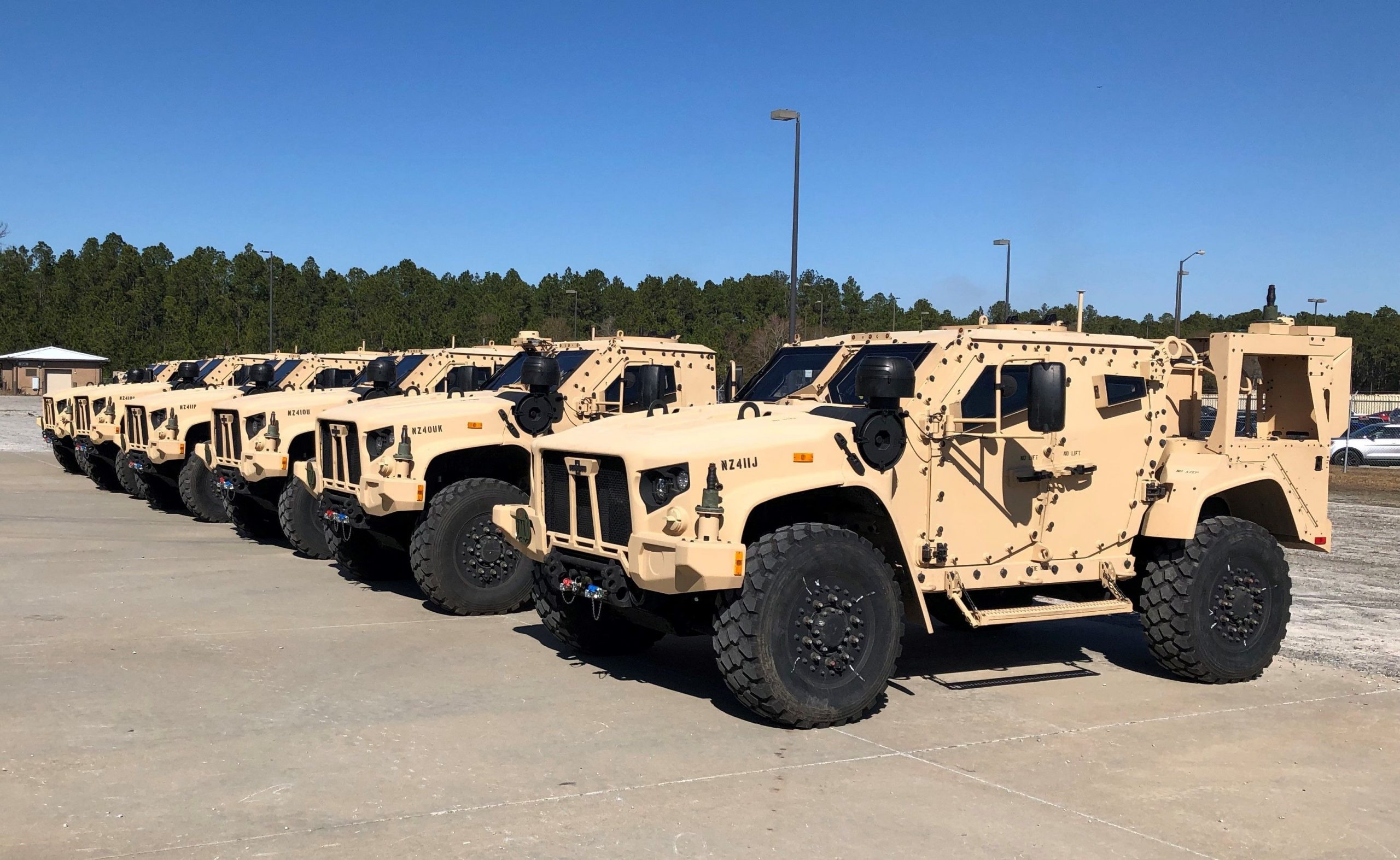
The U.S. Army plans to acquire and field approximately 3,230 Joint Light Tactical Vehicles (JLTVs) starting in 2021 to replace the ageing Humvees.
The Agile Combat Support Directorate is currently working with the Department of the Army to field the DoD replacement for up-armored High Mobility Multipurpose Wheeled Vehicles, better known as Humvees. Through an Army contract with the Oshkosh Corporation, the directorate’s Support Equipment & Vehicles Division, in partnership with the 441st Vehicle Support Chain Operation Squadron at Langley Air Force Base, Va., plan to buy over 3200 JLTVs from next year.
Developed by the Army based on the U.S. experience fighting in Iraq and Afghanistan, the JLTV is considered a major upgrade from Humvees currently in the field. It’s designed to achieve operational objectives in Performance, Payload and Protection against adversaries and provide better protection against improvised explosive devices.
While the Air Force has both up-armored and non-armored Humvees, this effort is currently focused on replacing up-armored Humvees.
The directorate is acquiring three different JLTV variants including a general purpose vehicle (GP), utility vehicle (UTL), and a heavy guns carrier vehicle (HGC).
“The functional mission determines the vehicle variant and configuration,” said Bello.
For instance, due to their unique mission and requirements, Security Forces, Tactical Air Control Party, Special Tactics and Explosive Ordnance Disposal professionals will all have different configurations.
The new vehicles will start coming off the production line in January 2021. From there they will be sent to the Naval Information Warfare Center located in North Charleston, S.C., for the installation of mission specific equipment. Providing there are no equipment delays, the vehicles will then be fielded to Air Force units starting around September 2021.
“This is a long-term program, and we’ll be buying [JLTVs] through possibly 2045,” said Bello. “There are a lot of Humvees out there that are still in good shape. We’ll replace approximately 125-150 per year through attrition.”
